Content strategy for a B2B firm takes skill, agility, perseverance, and technological aptitude. Your content creation and publishing plan will be successful when you keep these following principles in mind.
Rachel Lovinger, way back in 2007, described content strategy in an article on her site Boxes and Arrows by saying “that content strategy is to copywriting as information architecture is to design.”
She was ahead of her time. In a world saturated with millions of blogs, any one of them could contain the information a business is looking for. How do you make your content stand out? How can you possibly rise above the rest and be seen by your target audience? These are the questions answered by a successful content strategy.
Content Strategy Best Practices
The Foundation
Content strategy is the framework around which your group will work and present all the content you generate for your business. This means all written words, public communications, tweets, comments, et cetera. Everything. There are a lot of possibilities, all of which can be managed with the right strategy.
The content part of a content strategy is actually one of the last things you’ll worry about. Strategy means preparation, and preparation means thinking about the following five areas:
1. Right messaging. You’re marketing your services to other businesses. Let this inform how you approach content generation. You want your business to be seen as an industry leader, a reputable name, and the tone, venue, and style of the content you generate really affects perceptions. Consistency in tone is key. Do you want to be seen as casual, formal, humorous? You may need to tailor your messaging style to your audience.
2. Right planning. How long is this content campaign going to continue? You need to have a solid understanding of what it’s going to take to execute this plan before you engage in it. There’s no better way to lose momentum than by feeling like you’ve gotten yourself in over your head. Understand first what kind of time you’ll be able to put in (or how much you’ll budget for someone else to put in).
3. Right visuals. It’s true that we don’t just read the words anymore; the web has spoiled us for photos and graphics. Keep in mind as you plan out your content not only the true visuals that will accompany your content, but how they’ll be seen. Will photos be small? If they’re shared with another site, will they become distorted or look strange out of context? Test everything you create in a variety of ways to make sure it will work how you expect. Content that looks incomplete or wrong somehow is a great way to mess up your professional image.
4. Right timing. Know your audience’s schedule as you plan your content. Understand through your existing relationships when folks are most likely to read your content. It’s true that, once it’s out on the web, your content is permanent, but it’s best timed to be new as soon as your audience will read it. And a predictable schedule is crucial as well – let your readers know when to expect more from you, and they’ll come to depend on it.
5. Right follow-through. Savvy business owners can’t approach web content generation like book-writing. Content strategy is about far more than just putting content out for the public to see. Embrace technology and the way people communicate today by letting your strategy include provisions for responding to comments, following up on posts, updating your audience, et cetera.
The Vehicle
You may see from time to time a movie being described as a great vehicle for a certain actor’s talents. This is the type of vehicle we mean here, not the method used to convey a person from one place to another.
Think about what’s going to carry your content forward to success. It’s never going to be enough to present the well-informed content and then follow up on it. The web needs to serve as a vehicle for your content, presenting it in a way that enhances rather than detracts.
If you answer yes to the following questions, you’re good to go:
- Is it published and readily available online?
- Is it findable if you search for it, or is it at least optimized for findability (i.e. SEO-ready)?
- Is it shareable, tweetable, pinnable?
Thankfully, the web and web hosting tools have some serious built-in capabilities these days that can handle these issues, so the answers aren’t too far away. That’s good, because the answers to these questions are critical to your content’s success in reaching your audience.
These answers will make or break a content strategy in the end. Remember that an actor can be as incredible as any actor has ever been, but if he or she isn’t in the right films, then no stardom is possible. The same holds for the content you generate – plan for sharing and exposure and you’ll be in much better shape.
Content strategy isn’t easy, but when it’s done right, it’s a beautiful thing. Anyone who can read and write can generate content, but it takes a separate sort of art to do it with strategy. All of the above points, from expertise to shareability, will see you through to success.




